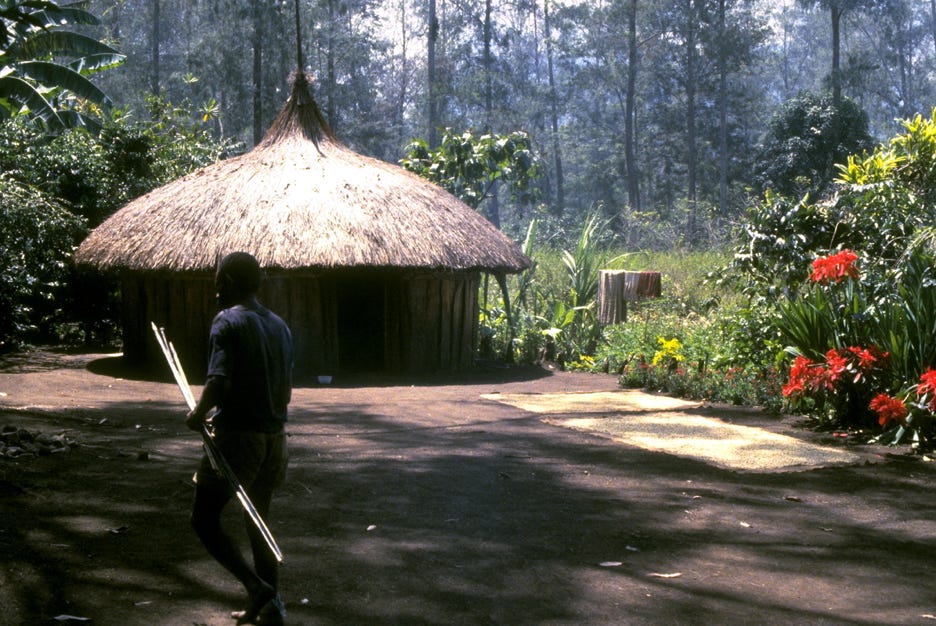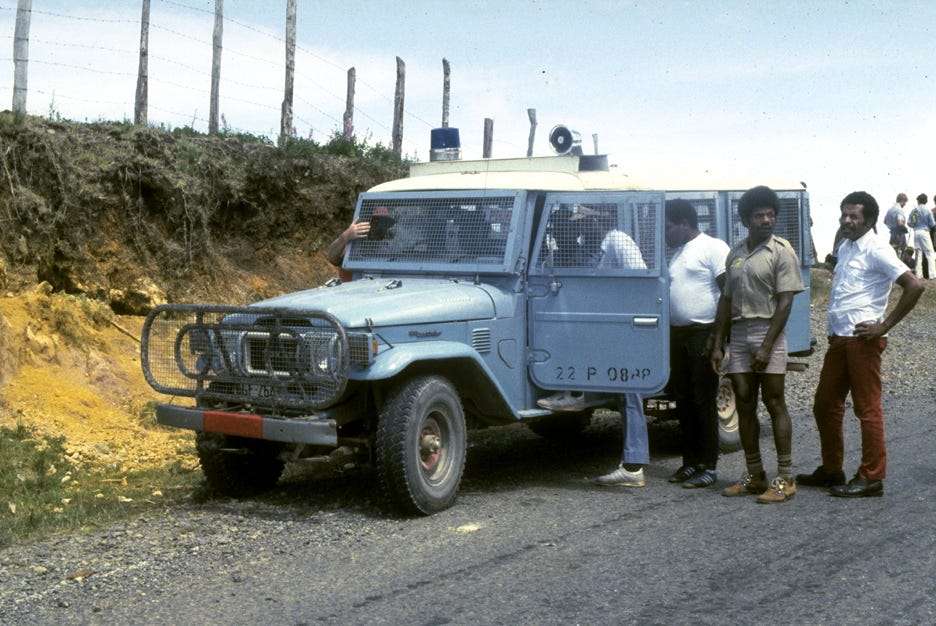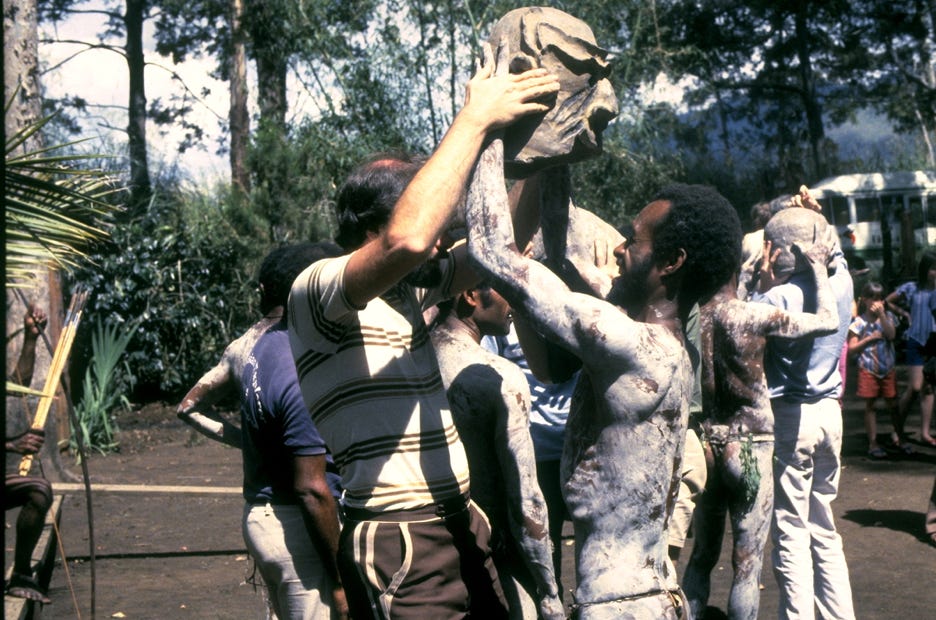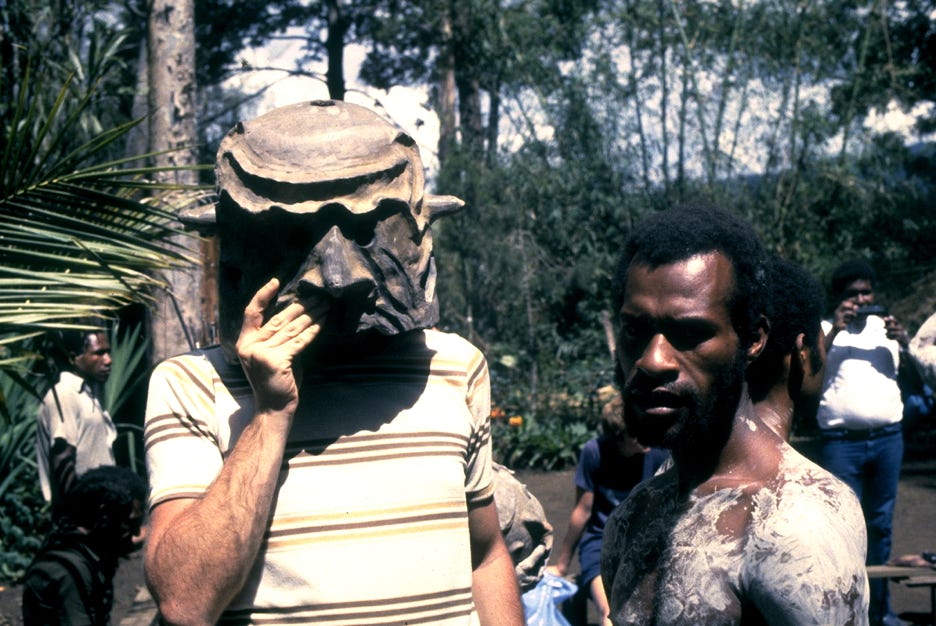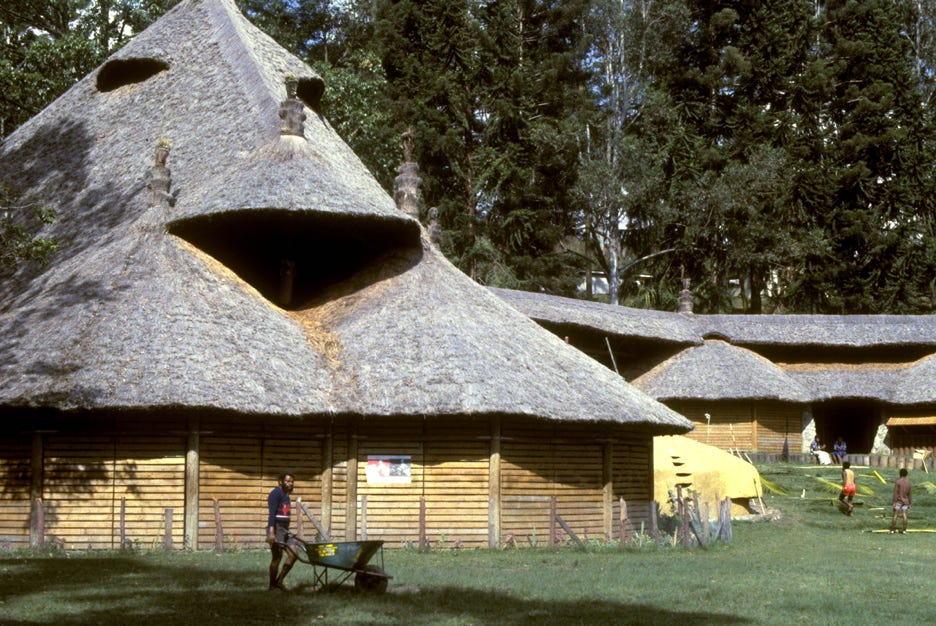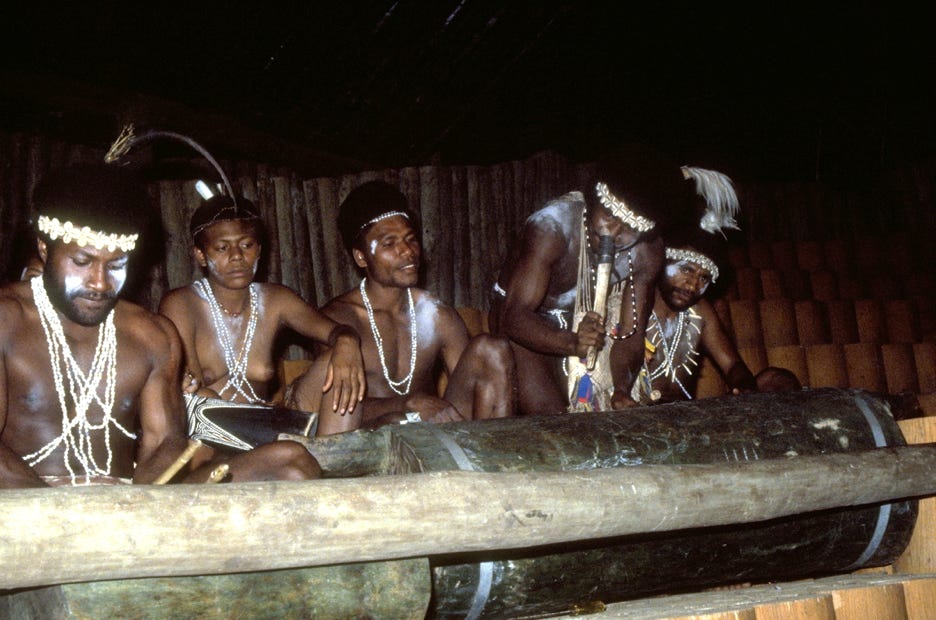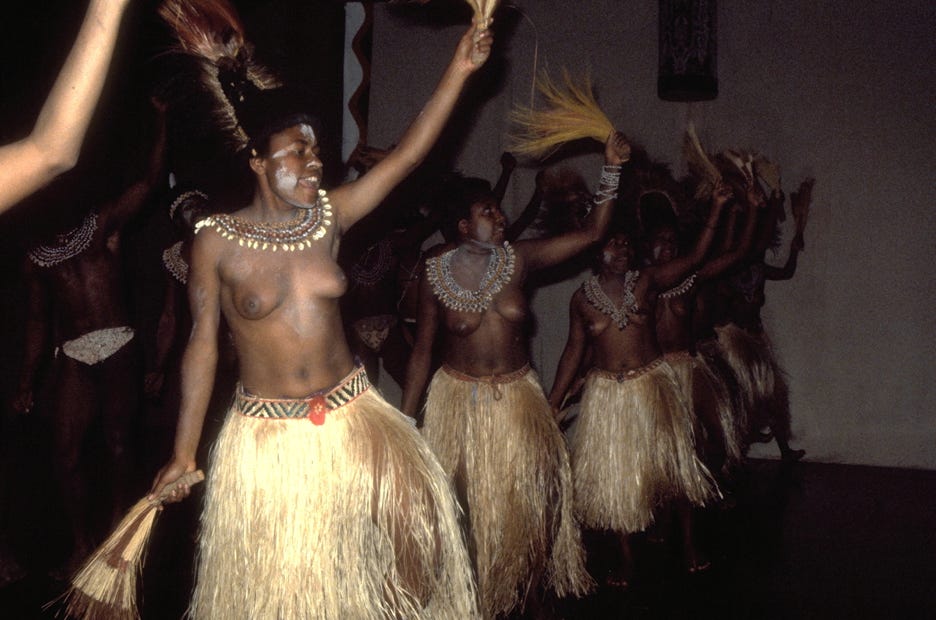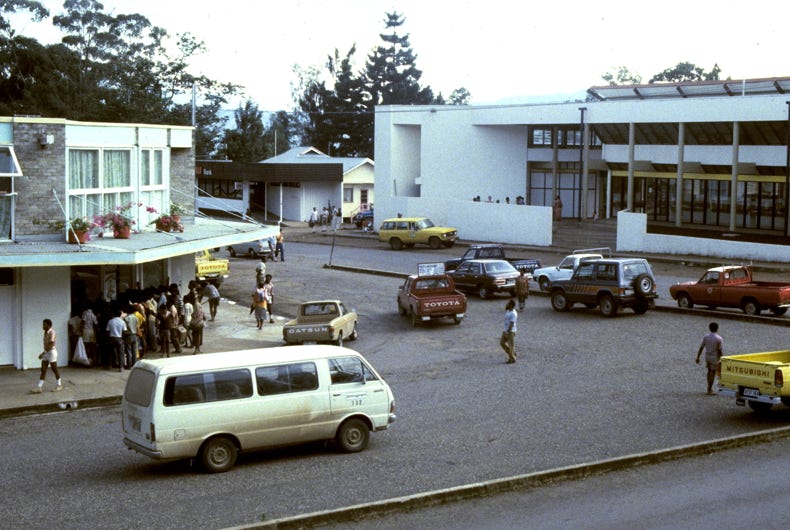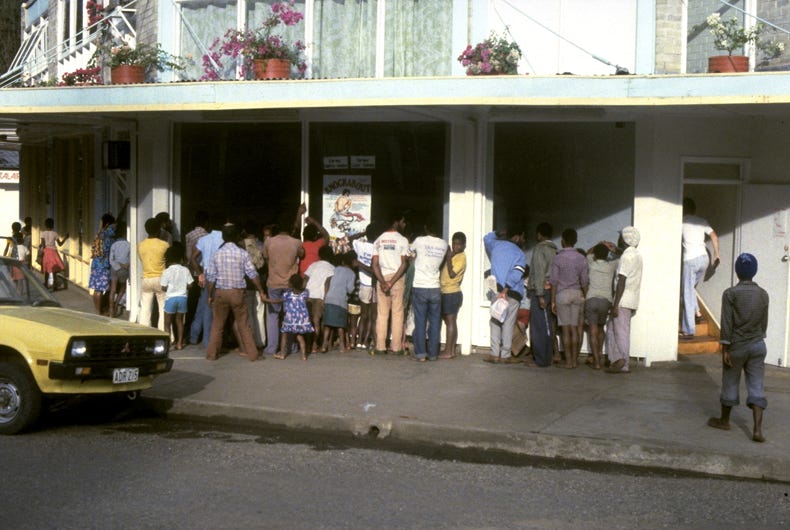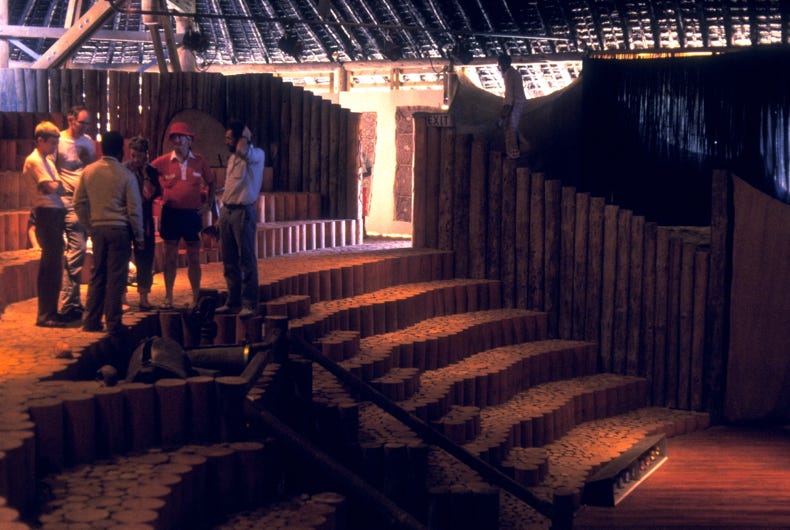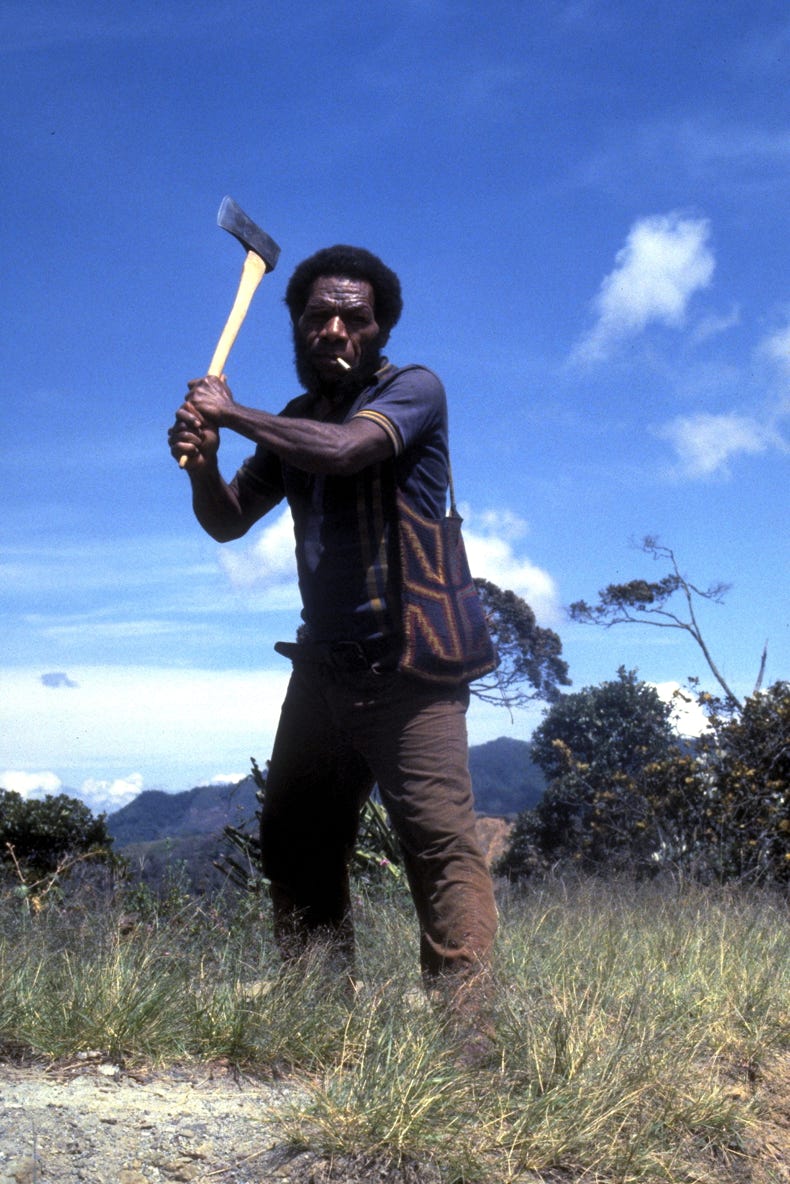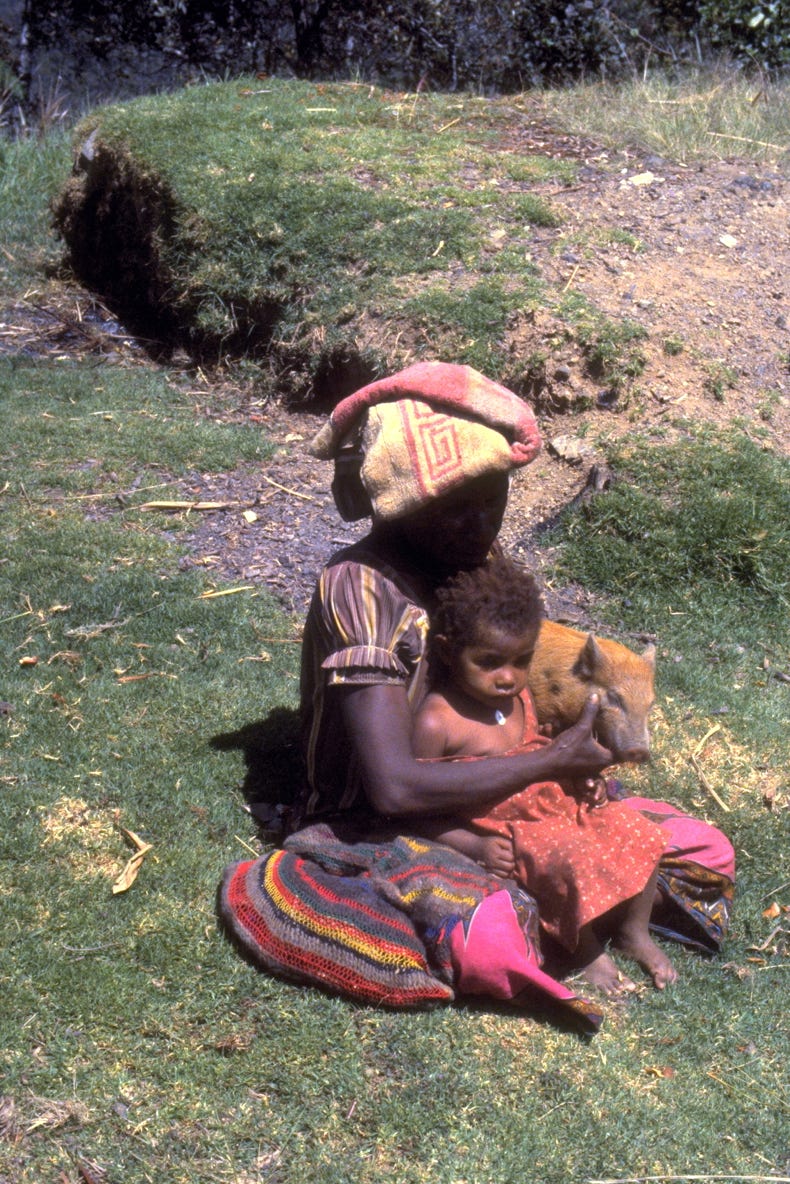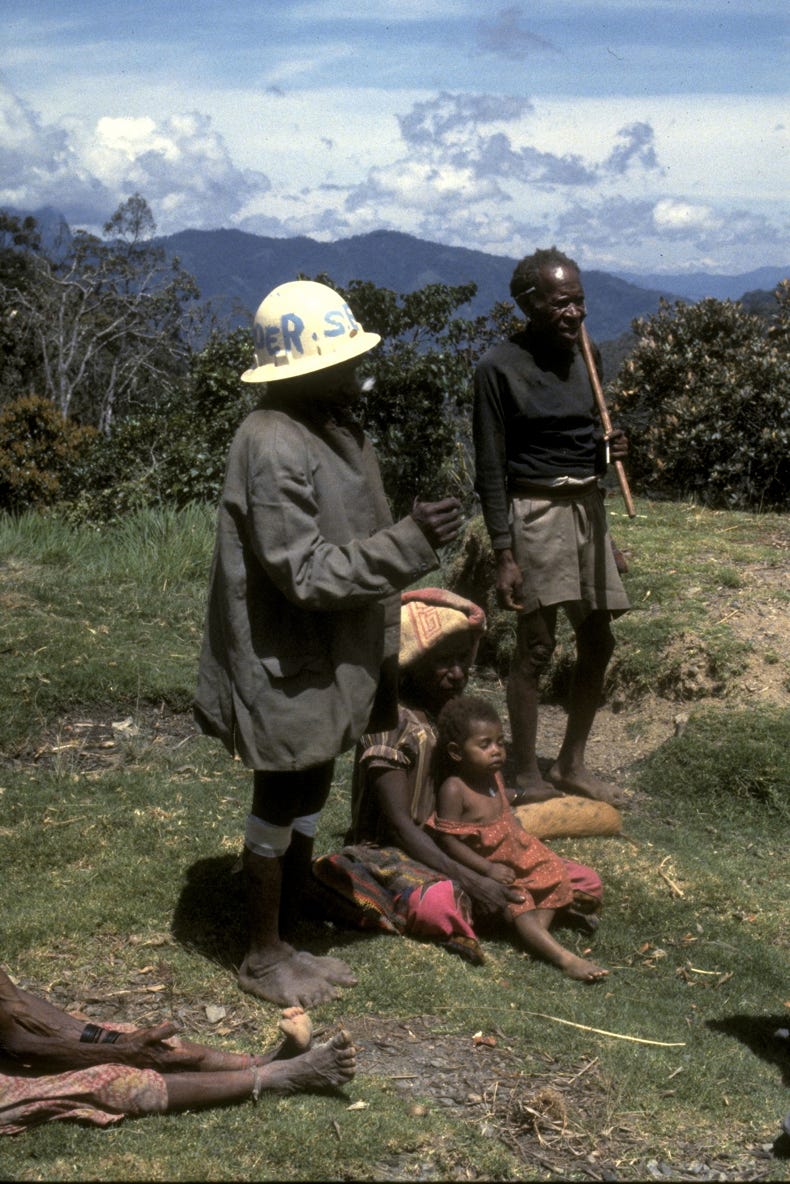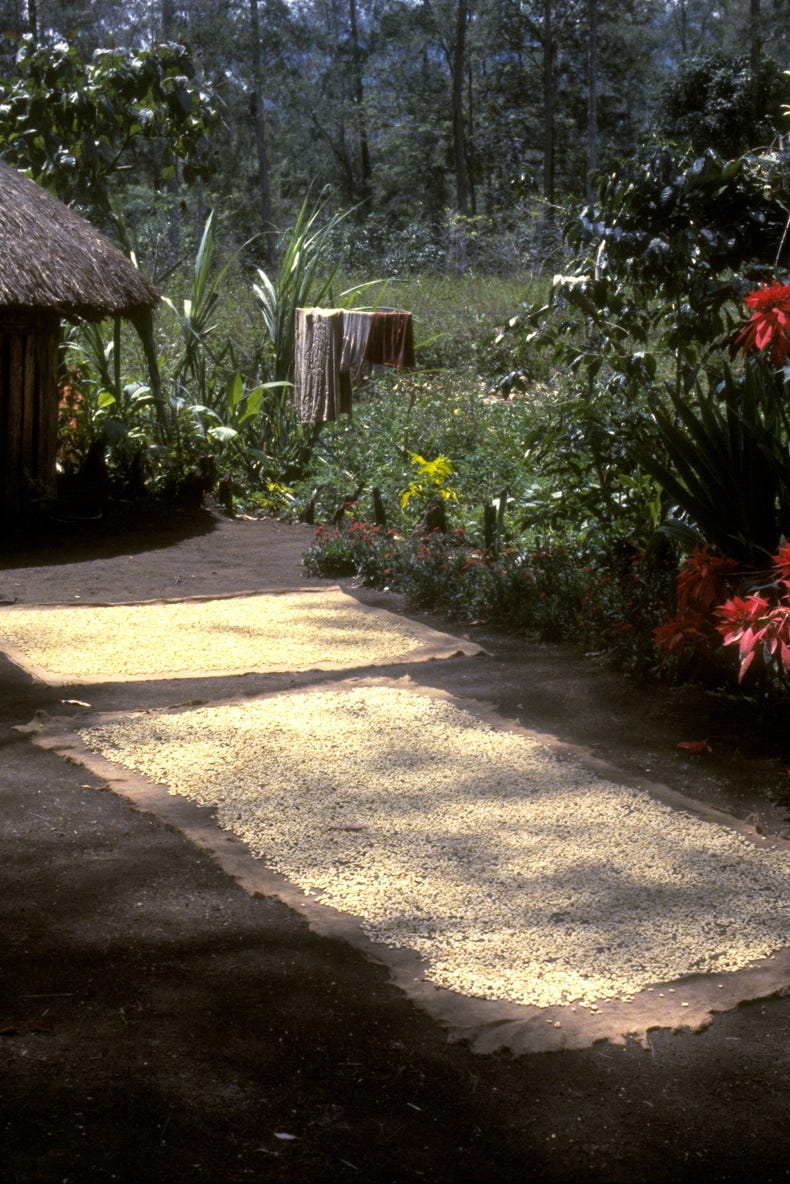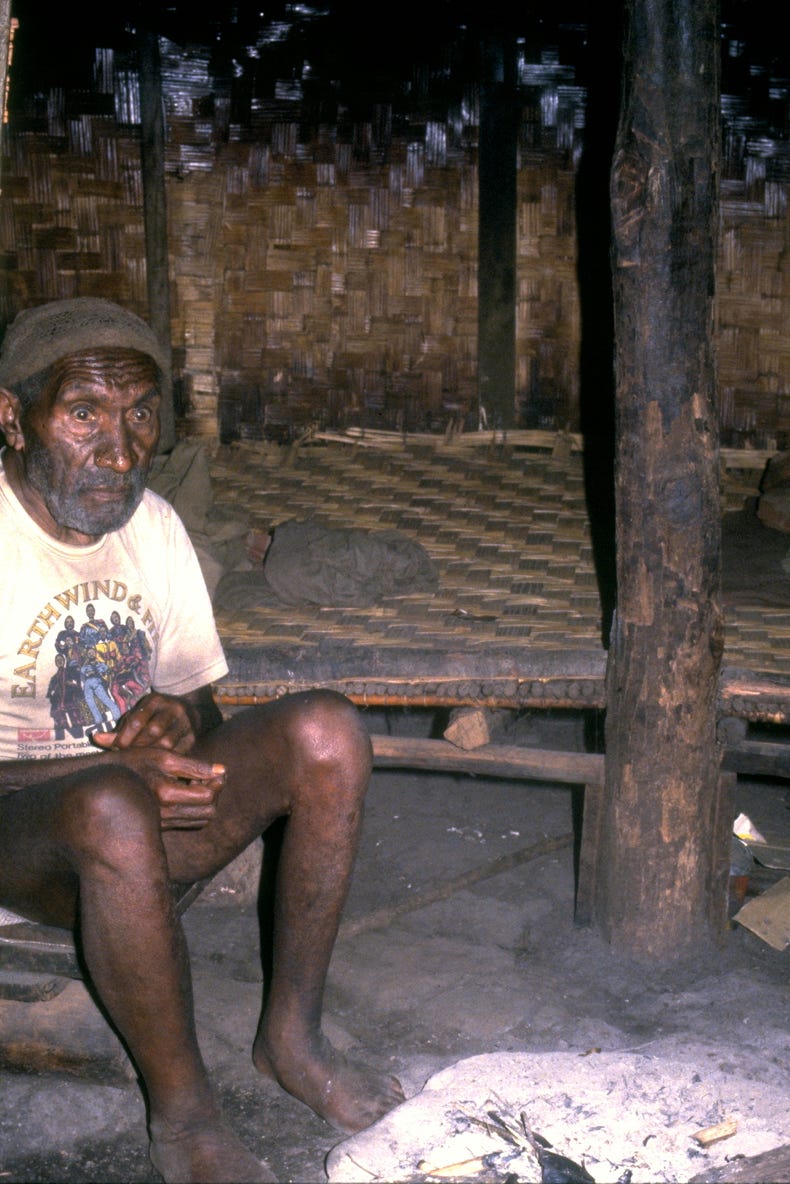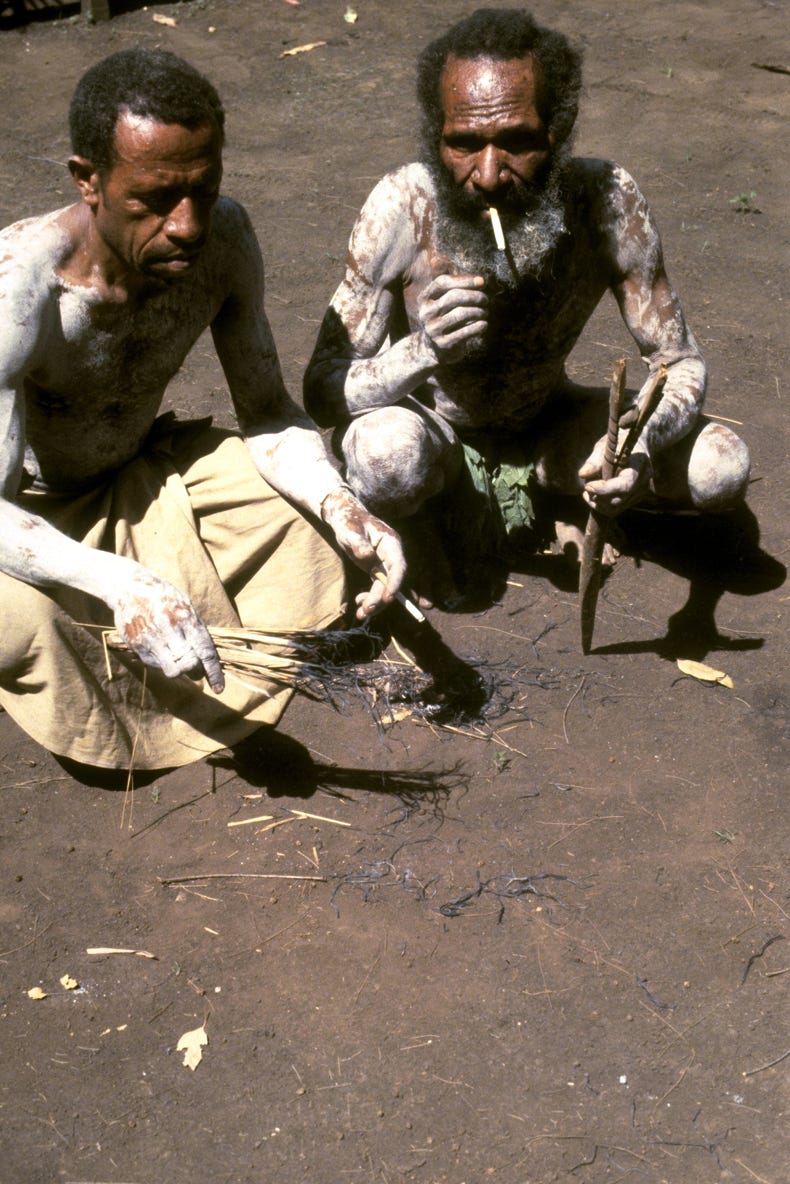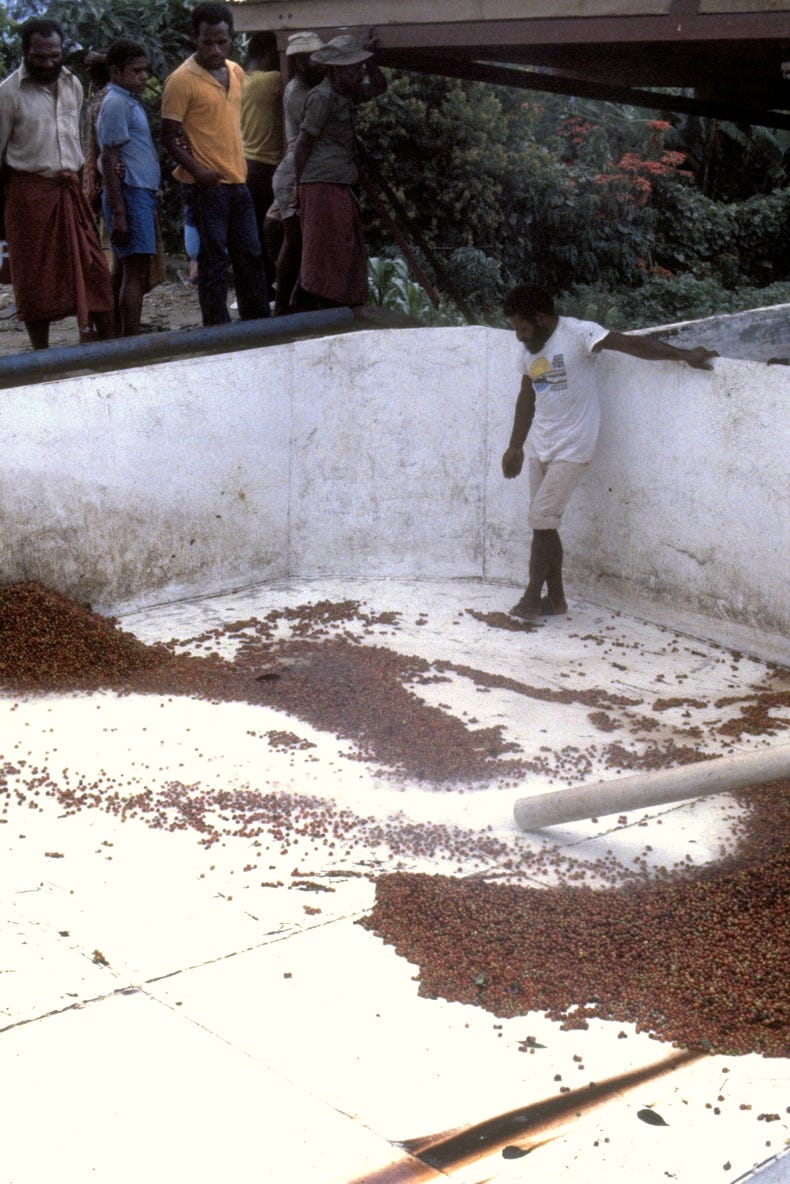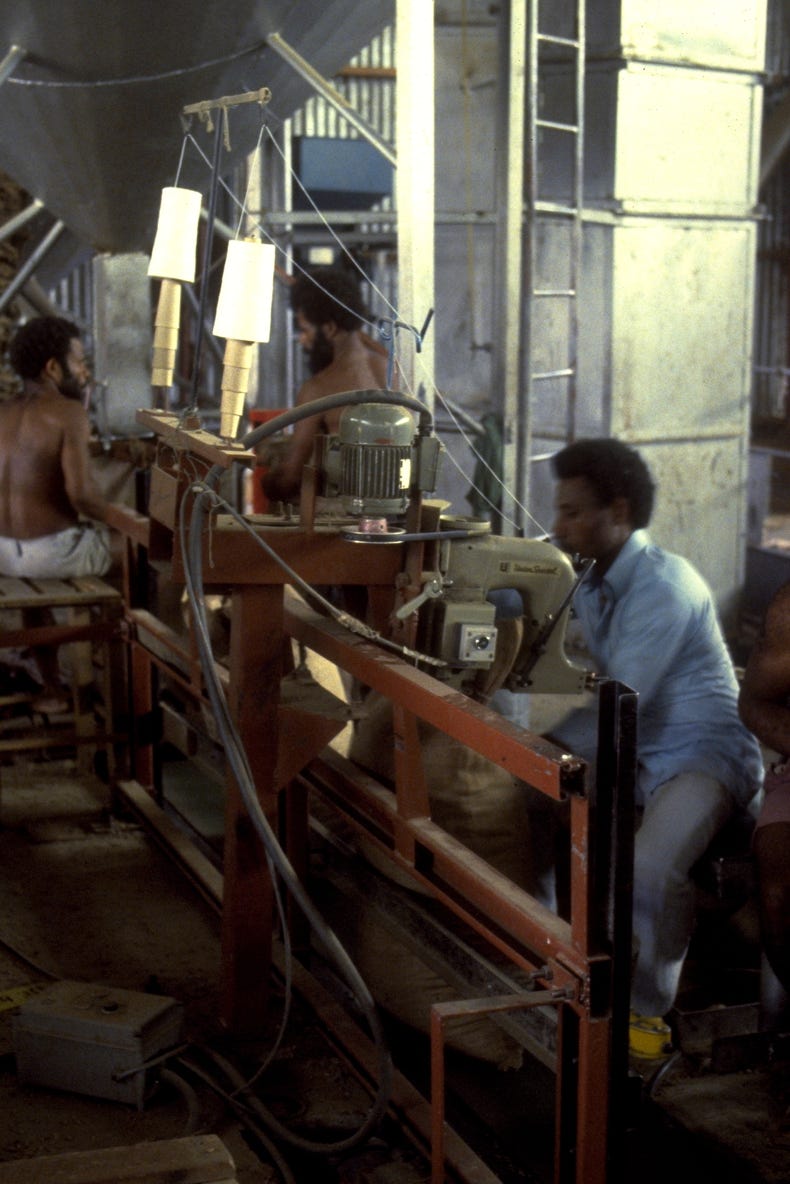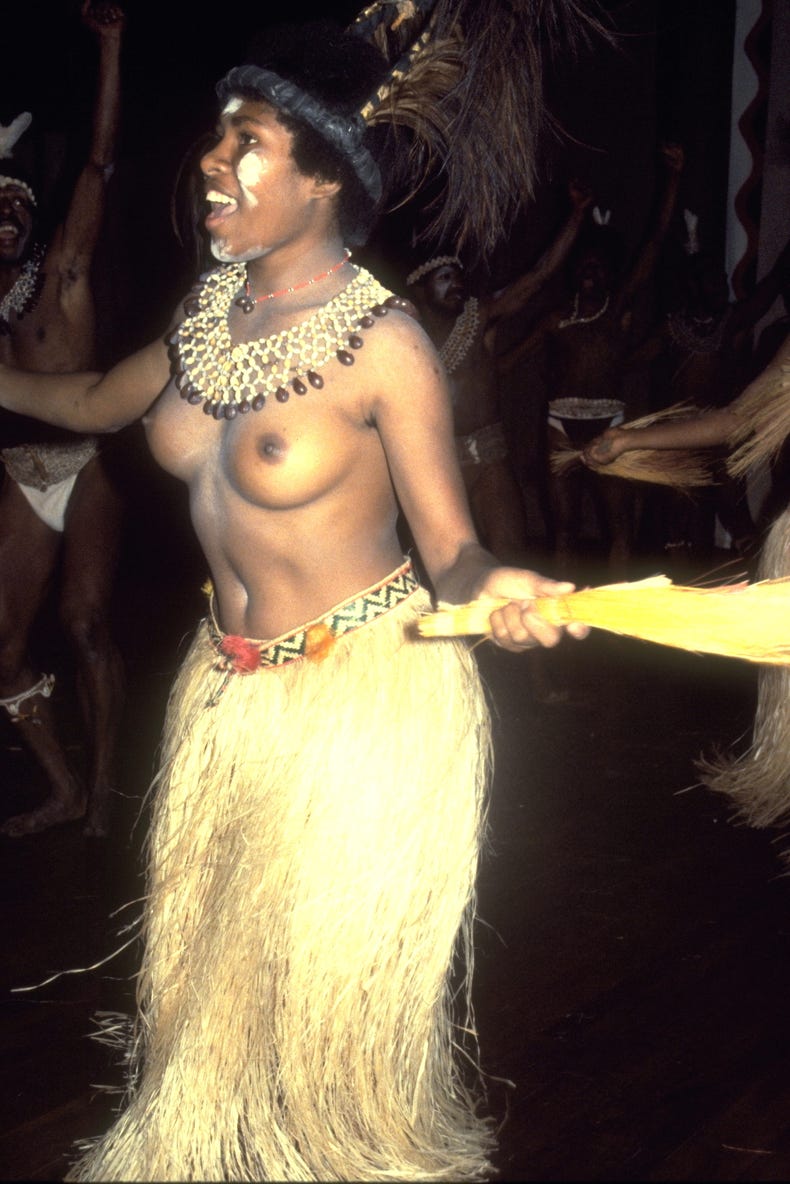
Today we proceeded in three small buses along the Highlands Highway eastwards towards Goroka. Our first “hurdle” to overcome was Daulo Pass, a 2,450 metre high ridge that the road crosses as it heads east. Daulo Pass is somewhat notorious as a place where “raskals” stop and rob vehicles, so we were a bit apprehensive as we approached the area. For that reason, almost no-one attempts the crossing after dark.
We need not have worried. We stopped there, and the only local people we found were a woman with her baby and pig (both of which she was breastfeeding), and a couple of men who wanted to pose for photos in return for a small fee. Oh yes, and the police 4WD patrol vehicle with such thick mesh over its windows for protection that I wondered how the driver could see through it to drive the vehicle.
We learned that all the police who are posted in the Highlands are from other parts of the country; it is government policy that local people are never posted as police in their home areas because “wantok” loyalties might over-ride their impartiality. The “wantok” (one talk) system in Papua New Guinea is an important basis of Papua New Guinea’s cultural diversity. In essence, it means that people who share the same language (and are thus “wantoks”) have an obligation to help each other in any situation; wantoks know that if ever they need help or are in trouble, they can count on support from other wantoks, even if they have never met previously. In some ways, the wantok system is Papua New Guinea’s substitute for a national social security system. The downside is that wantok loyalties can sometimes lead to nepotism and corruption.
Moving on from Daulo Pass, our next stop was in Asaro village where we experienced a performance by Asaro’s famous mudmen (well, they are famous in Papua New Guinea). The Asaro mudmen cover their bodies in grey clay and wear head coverings made of thick clay with semi-aggressive facial expressions. The background to this “ceremony” is that in ancient times the Asaro villagers lost a fight with their tribal enemies. In Papua New Guinea, such a loss demands a “payback” – Papua New Guinean society seems to place a huge emphasis on reciprocity.
Someone in Asaro had the bright idea of covering themselves in grey mud and wearing mud masks before heading off on their payback raid. When they emerged from the fog-shrouded forest around their enemy’s village, the Asaro’s enemies thought they were ghosts and so they fled in terror.
After a performance by the mudmen, which comprised a slow motion walk while waving a few twigs of leaves (not the most animated performance I have ever witnessed!), we were offered the opportunity to put on a mud helmet-mask for photographs. Those mud masks are heavy!!!
Before leaving Asaro, we observed some coffee drying and inspected the Asaro Coffee factory. After that we drove on to Goroka, arriving in the late afternoon. This gave us time for a short walk around town. I noticed a huge crowd of local people gathered and looking in through the window of one of the shops across the road from our hotel, and I wondered what the attraction might be, so I walked across to take a look. The attraction was immediately evident, a small 17-inch television set. Apparently almost no residents of Goroka have televisions in their homes, so standing in the street looking into a shop window is the next-best substitute.
Our accommodation in Goroka was at the Bird of Paradise Hotel, quite easily the best accommodation of the trip. This evening we viewed a new film called ‘First Contact’, which showed actual footage taken by the first Europeans to venture into the Highlands during the 1930s. Released just last year, we learned that the Highlands of Papua New Guinea were one of the last places in the world to experience large-scale “First Contact” between indigenous people and the outside world. In the 1930s three Australians, Michael, Daniel and James Leahy, were the first white people to venture into the vast interior of the island of New Guinea. They ventured there in search for gold, some of which they found. However, of more enduring significance, they discovered a million people who had previously had no contact with the outside world, and which the outside world never suspected existed. Unlike earlier “First Contact” experiences in the other parts of the world, the Leahy brothers took a film camera with them and recorded their initial contact experiences.
The makers of the movie “First Contact” had travelled through the Highlands and managed to find many of the people who were recorded in the movie footage recorded by the Leahys in the 1930s. Naturally, these people who had been boys and girls, or young men and women in the 1930s, were elderly by the 1980s, but they clearly remembered and entertainingly recounted their experiences of seeing people with white skin for the first time. The movie made compelling viewing, and it was a very special experience seeing it right there in the Papua New Guinea Highlands where it all had been filmed.
Due to the generosity of some of the parents in the group and the subsequent appreciative donations made by the students, our group was able to witness a performance of traditional dance from different parts of Papua New Guinea at the Raun Raun Theatre in Goroka this evening. The Raun Raun Theatre was a truly beautiful – and large –building, opened just last year and still receiving its finishing touches. Its design is based on a Highlands roundhouse and is built almost entirely of treated bush materials. The performance of traditional dancing we witnessed was accompanied by music on traditional instruments, and without doubt was a highlight of the trip.
Indeed, the combination of seeing both ‘First Contact’ and a performance at the Raun Raun Theatre on the same evening meant we finished the day with an incredibly rich and memorable feast of local culture.

